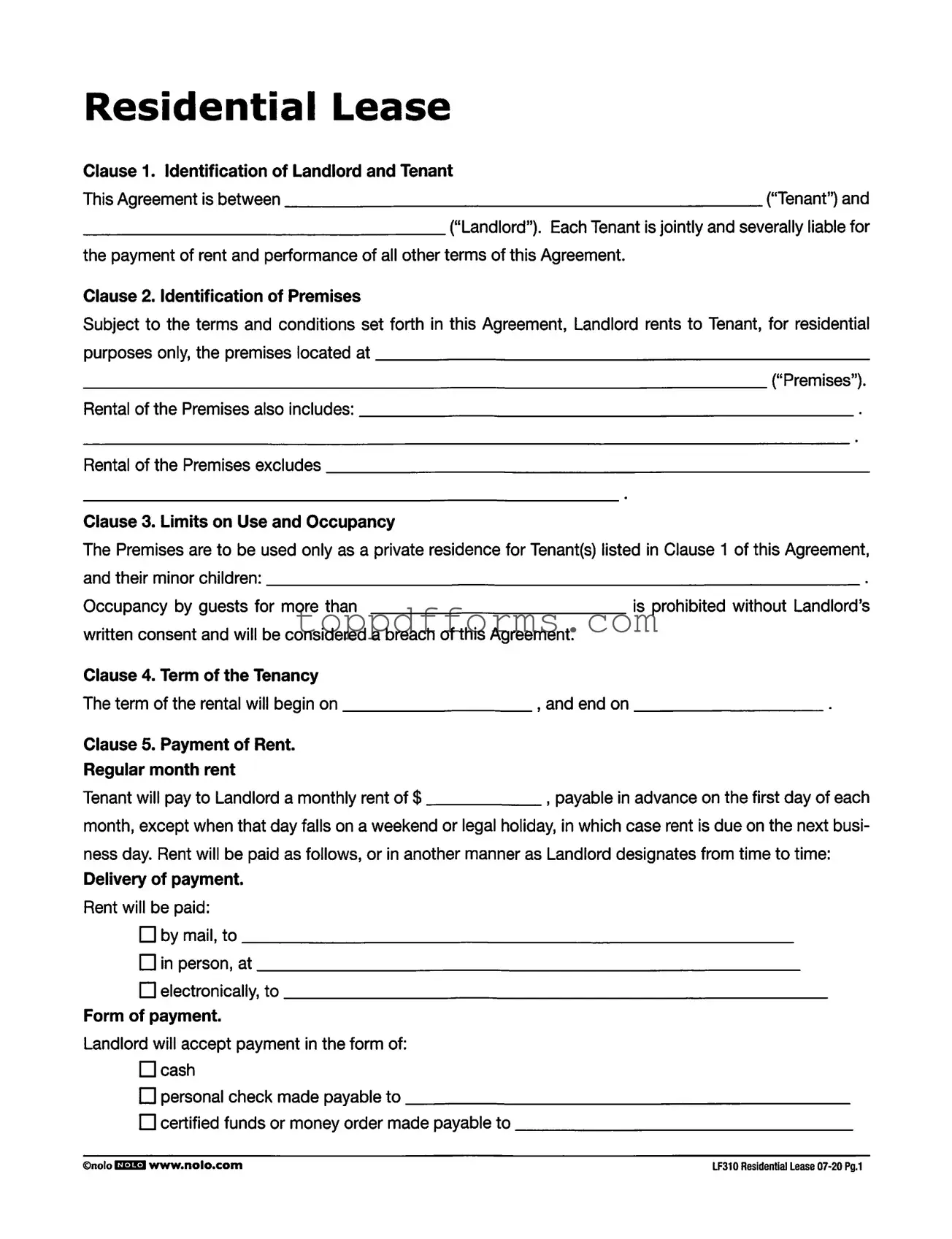What is the Lf310 Residential Lease form used for?
The Lf310 Residential Lease form is a legally binding document that outlines the terms and conditions of renting a residential property. It serves to protect both the landlord and tenant by clearly defining the rights and responsibilities of each party. This form includes important details such as the identification of the landlord and tenant, the premises being rented, payment terms, and rules regarding the use of the property. By using this form, both parties can avoid misunderstandings and ensure a smooth rental experience.
What are the key responsibilities of tenants under this lease?
Tenants have several important responsibilities outlined in the Lf310 Residential Lease form. Firstly, they must pay the agreed-upon rent on time and in the specified manner. This includes adhering to any late charges if the rent is not paid within the designated grace period. Additionally, tenants are responsible for using the premises solely as a private residence and must not allow unauthorized guests to occupy the property. They are also required to maintain the premises in good condition and must not sublet or assign the lease without the landlord's written consent. Failure to fulfill these responsibilities can lead to consequences, including potential eviction.
How is the security deposit handled according to the lease?
Upon signing the Lf310 Residential Lease, tenants are required to pay a security deposit, which serves as a financial safeguard for the landlord. This deposit cannot be used by the tenant to cover last month’s rent without the landlord's written consent. After the tenant vacates the premises, returns the keys, and provides a forwarding address, the landlord is obligated to return the deposit within a specified timeframe. If any deductions are made from the deposit for damages or unpaid rent, the landlord must provide an itemized statement detailing the reasons for the deductions. This process ensures transparency and protects the interests of both parties.
What happens if a tenant fails to pay rent on time?
If a tenant fails to pay rent on time, the Lf310 Residential Lease form stipulates that they may incur late charges. These charges are predetermined and are designed to compensate the landlord for the inconvenience caused by late payments. The lease specifies the number of days allowed before a late charge is applied and the amount of the charge itself. Furthermore, if a check bounces due to insufficient funds, the landlord has the right to demand payment and pursue legal remedies as necessary. Timely rent payments are crucial to maintaining a positive landlord-tenant relationship.
